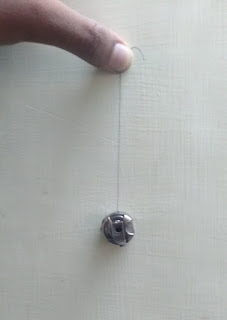Sewing machines are used for used making readymade garments. Sewing machines are a complicated device. Still, one can be mastered with practice. But along with that, sewing machine operators must be aware
of the general practices to be followed while operating the machine.
This will not only help her with the control over the machine but also avoid
any kind of defect in the sewing. Below are some Do’s and Don’ts that must be followed as a
habit to have a smooth experience with the sewing machines.
DO’s: List of things operators should follow when working on a sewing machines
- Make sure that you are perfectly comfortable and that you are sitting at the right height for the work table.
- Make sure that you have plenty of space especially around the left side of your machine. This will help you with easier material handling.
- Make sure of the lighting around the workspace. Do not work in shadows as performance as well as quality may get compromised.
- Be positive about your skill, relax and think the sewing machine as a part of you. This will help you run the machine much smoothly.
- Do turn the balance wheel downwards and towards you, if your machine sounds laboured as you start to sew – it will lengthen the life of the motor.
- Do clean, oil (where applicable) and do general maintenance on your machine regularly. Remember to turn off your machine first.
- For the beginners do open the bobbin area and operate the balance wheel manually so you can see how the needle thread and the bobbin thread react with each other. This will help you understand the working g of the machine.
- Always use the correct feed dog for the job. It will reduce the time taken many folds as well as give a much neater finish.
- Do insert needle correctly as directed in the manual.
- Make sure of doing a proper bobbin winding as any slackness will result in improper stitch.
- Do leave a scrap of fabric under the foot when the machine is not in use and leave the foot down.
- Do check for correct tension in the bobbin
- Hang the bobbin mid-air by the thread, if it stays the tension is correct.
- Have in-depth knowledge of the machine which would include remedies for any defects in the sewing process.
- Thread take-up lever should be at its highest position before pulling the fabric to cut the thread ends, this ensures that there is no tension in a thread, and it comes out easily.
- Make use of the edge of the pressure foot and marking in needle plate as a reference to align the edge of the fabric to get a uniform edge stitch.
- Pull the fabric gently so that the fabric does not get wrinkle as it gets feed through the machine.
- Hold thread tails to prevent the machine to pull them back.
- For pivoting the fabric material always make sure that the needle is down, and it is always preferable to sew from hand wheel when sewing at the edge of the fabric.
- Make sure all the screws are tightened properly after the machine is opened for maintenance or for other reason.
- Remember correct practice makes operators perfect.
 |
| Fig - Checking thread tension |
 |
| Fig - Placing a fabric piece under the pressure foot |
Don'ts: List of don’ts with the sewing machines
- Do not forget to change the needle to suit the fabric being sewn or after every two garments.
- Do not rush to complete your job, on any mishap, it will take up even more time and the fabric can also be damaged.
- Do not use the switch at the socket to turn off the machine instead uses the switch on the machine.
- Do not use a pin magnet near an electronic or a computerised machine as it can mess with the electronics.
- Do not rest your foot on the foot pedal when you are not actually sewing as it will heat up and can damage the machine.
- Do not leave the accessories box lying around as small parts can get lost.
- Do not pull or push the fabric through the machine. Let the machine feed at its own pace. If it doesn’t feed smoothly check for the pressure, as it may need some adjustment or the machine, may need a service.
Reference: A-Z of the sewing machine by Maxine Henry



